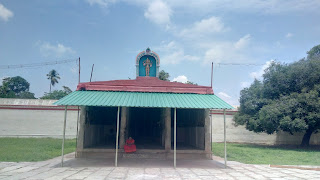The
Periyapuranam by Sekkizhar
The Periyapuranam, an epic
composed by Sekkizhar, is a revered Tamil literary masterpiece that holds a
unique place in the hearts of Shaivites and Tamil literature enthusiasts.
Written in the 12th century, this hagiographic work chronicles the lives of the
63 Nayanmars, the ardent devotees of Lord Siva, whose devotion and miraculous
experiences have become legendary. It is also one among the 12 Canonical works
of Saivism.
The
Historical Context
Sekkizhar, a devout minister
in the court of the Chola king Kulothunga II (Anabaya Cholan), penned the
Periyapuranam at a time when the Chola dynasty was at the zenith of its power.
The king, inspired by Sekkizhar's devotion and literary prowess, commissioned
the work to immortalize the lives of the Nayanmars, thereby reinforcing Saivism's
cultural and spiritual ethos within the Tamil-speaking regions. The epic not
only served a religious purpose but also acted as a political and cultural
instrument, unifying the people under the spiritual umbrella of Saivism.
The
Structure and Content
The Periyapuranam, also
known as Tiruttondar Puranam, is composed of nearly 4,286 verses written in a
form of classical Tamil poetry. The work is divided into chapters, each
dedicated to a specific Nayanar, detailing their life stories, acts of
devotion, and the divine experiences they encountered.
The narratives within the
Periyapuranam are rich with miraculous events and moral lessons. Each Nayanar's
story is a testament to the power of unwavering devotion to Lord Siva. From
Kannappa Nayanar, who offered his own eyes to the deity, to Sundarar, whose
hymns are still sung in temples today, the tales exemplify the ideal devotee's
qualities: humility, sacrifice, and unshakeable faith.
Literary
and Cultural Significance
The Periyapuranam is more
than just a collection of religious stories; it is a vital piece of Tamil
heritage. Its literary excellence lies in its use of elegant, emotive language
and the intricate structuring of verses that adhere to strict poetic conventions.
Sekkizhar's ability to weave devotional fervor with poetic beauty has made the
Periyapuranam a timeless classic.
Culturally, the
Periyapuranam has had a profound impact on Tamil society. The stories of the Nayanmars
are taught to children, enacted in plays, and referenced in various art forms.
The values espoused by the Nayanmars, such as compassion, humility, and
unwavering faith, abundant love toward Siva and His devotees, continue to
resonate with people today, influencing the ethical and spiritual fabric of
Tamil culture.
The
Spiritual Essence
At its core, the
Periyapuranam is a spiritual beacon for devotees of Lord Siva. It offers a
pathway to understanding the divine through the exemplary lives of the Nayanmars.
The epic underscores the belief that true devotion transcends social status,
wealth, and intellect; what matters most is the purity of heart and the depth
of one's faith.
Conclusion
The Periyapuranam by
Sekkizhar is not just an epic; it is a spiritual odyssey that continues to
illuminate the path of countless devotees. Its literary grandeur and profound
spiritual insights make it a cornerstone of Tamil literature and Shaivite
tradition. By chronicling the lives of the Nayanmars, Sekkizhar has bestowed
upon the world a treasure trove of wisdom, devotion, and divine inspiration
that remains as relevant today as it was centuries ago.





































